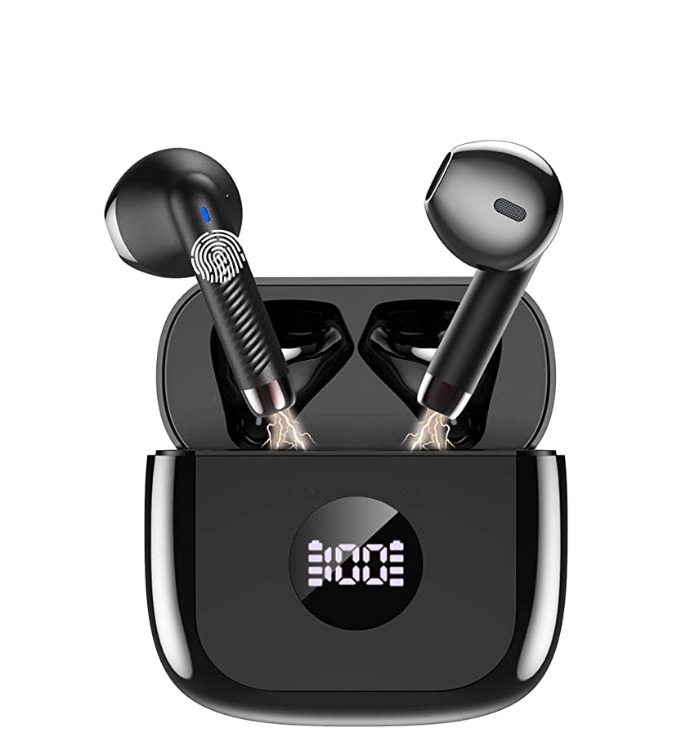Your First Perfect Espresso: A Step-by-Step Guide to Dialing In Any Machine
Update on Oct. 9, 2025, 6:35 p.m.
You’ve unboxed your first real espresso machine. It sits gleaming on your counter, a vessel of promise for café-quality mornings. You’ve read the manual, maybe watched a video or two. But when you stand before it, portafilter in hand, a sense of uncertainty can creep in. You follow the steps, but the result is a lottery—sometimes okay, often not. This feeling of being lost between instructions and intuition is where many coffee journeys stall.
But what if you had a map? Not a list of rigid rules, but a flexible, reliable workflow—a process that puts you firmly in the driver’s seat. This guide is that map. We’ll use a machine like the Neretva PE3690U as our example, but the principles you’re about to learn are universal. They apply to nearly every semi-automatic espresso machine on the market. Ready to take control? Our journey starts with the heart of every coffee drink: the espresso shot. This isn’t about secret recipes; it’s about a repeatable process. Let’s build your workflow, together.

Part 1: The Espresso Workflow – Dialing In Your Shot
“Dialing in” is the process of adjusting variables to achieve a balanced and delicious espresso extraction. It sounds technical, but it’s a simple loop: Prepare, Execute, Diagnose, Adjust.
Step 0: Your Essential Toolkit
Before we start, let’s acknowledge three things that will elevate your coffee more than any machine feature:
1. Fresh Coffee Beans: Coffee is a fresh product. Beans roasted within the last month are ideal.
2. A Burr Grinder: This is non-negotiable. Blade grinders chop beans inconsistently; burr grinders provide the uniform particle size essential for a good extraction.
3. A Digital Scale (0.1g accuracy): This is your most powerful tool for consistency. You cannot reliably make good espresso without one.
Step 1: Dose – The Foundation of Consistency
Your “dose” is the weight of dry coffee grounds you put in your portafilter’s basket. For a typical double-shot basket found in machines like the Neretva (often 51mm in diameter), a good starting point is 15-17 grams.
Your task: Pick a dose and stick with it for now. Let’s say 16 grams. Weigh exactly 16g of beans, grind them, and put them in your portafilter. The goal here is to eliminate a variable. By keeping the dose constant, we can focus on adjusting just one thing at a time.
Step 2: Puck Prep – Creating an Even Bed
“Puck prep” is about ensuring the coffee grounds are evenly distributed in the basket before you tamp. This prevents “channeling,” where water finds an easy path and under-extracts the coffee.
1. Distribute: After grinding, the grounds will be clumpy. Gently tap the side of the portafilter with your hand to settle them, or use a simple tool (like a paperclip) to stir the grounds and break up clumps. The goal is a fluffy, level surface.
2. Tamp: Place the portafilter on a flat surface. Using your tamper, press down firmly and evenly. The amount of pressure is less important than making sure the tamp is perfectly level. Give it a gentle twist as you finish to polish the surface. You’ve now created a dense, uniform “puck” of coffee.
Step 3: Brew Ratio & Extraction – Hitting Your Target
This is where your scale becomes a game-changer. We’re going to use a brew ratio. The most common starting point for espresso is 1:2. This means for every 1 gram of dry coffee, we want 2 grams of liquid espresso in the cup. * Our Goal: Since our dose is 16g, our target yield is 32g of liquid espresso.
Your task:
1. Place your scale on the drip tray and put your cup on it. Tare it to zero.
2. Lock the portafilter into the machine.
3. Start a timer and press the brew button simultaneously.
4. Watch the scale. When it reads around 28-30 grams, press the brew button again to stop the shot. A little extra water will drip out, bringing you close to your 32g target.
5. Note the total time on your timer. For a balanced shot, we’re aiming for 25-35 seconds.
Step 4: Taste & Diagnose – Becoming the Technician
Now, taste your espresso. This is the most important part. Is it delicious? Great! Is it not? That’s also great, because now we can diagnose it.
(Value Asset: The Espresso Diagnostic Flowchart)
-
Scenario A: The shot finished in <20 seconds AND tastes sour, thin, and watery.
- Diagnosis: Under-extracted. The water flowed through the puck too quickly.
- Action: Make your grind finer. This is your primary adjustment. A finer grind creates more resistance, slowing down the water flow and allowing for more extraction. Keep your dose (16g) and yield (32g) the same, and try again.
-
Scenario B: The shot took >40 seconds AND tastes bitter, harsh, and burnt.
- Diagnosis: Over-extracted. The water struggled to get through the puck, lingering too long.
- Action: Make your grind coarser. This will reduce resistance and speed up the flow. Again, keep the dose and yield constant.
This is the entire process of dialing in. You are simply adjusting your grind size to hit your target yield (32g) in your target time (25-35 seconds). Once you achieve this, you have a balanced, repeatable shot.
Part 2: The Milk Workflow – Creating Silky Microfoam
Congratulations, you’ve pulled a balanced shot of espresso! Now, let’s turn it into a café-quality latte. The key is microfoam—perfectly textured milk with the consistency of wet paint, not the bubbly foam of a bubble bath.
The Two Phases of Steaming
- Stretching (Aeration): This is the phase where you introduce air into the milk, creating volume. This only lasts for the first few seconds.
- Texturing (Vortex): This is the longest phase, where you stop adding air and use the steam to create a whirlpool. This vortex breaks down large bubbles and integrates the air, creating a silky, uniform texture.
Step-by-Step Guide:
- Start Cold: Use fresh, cold milk in a cold metal pitcher. Fill it to just below the base of the spout.
- Purge!: As we learned, entry-level machines produce wet steam initially. Always open the steam wand for 3-5 seconds into a cloth to purge the hot water before putting it in your milk.
- Position: Submerge the steam wand tip just below the surface of the milk, slightly off-center.
- Phase 1: Stretch: Turn the steam wand on fully. You should hear a gentle “tsss-tsss” sound, like paper tearing. This is air being introduced. Keep the tip near the surface until the milk has increased in volume by about 30% (the pitcher will feel slightly warmer than body temp). This should only take 5-10 seconds.
- Phase 2: Texture: Plunge the steam wand deeper into the milk, still off-center. The goal now is to create a spinning vortex. Find the right angle and depth where the milk is rolling over itself. The sound should now be a gentle rumble.
- Heat: Keep this vortex going until the outside of the pitcher is too hot to comfortably hold for more than a second (around 60-65°C or 140-150°F). Turn the steam off before removing the wand from the milk.
- Polish: Immediately wipe the steam wand with a wet cloth and purge it again. If you have any large bubbles in your milk, give the pitcher a firm tap on the counter and swirl it gently to create a glossy, paint-like sheen. Pour into your espresso and enjoy.

Conclusion: You’re Not Just Making Coffee, You’re a Craftsman
This workflow is your foundation. It may seem like a lot of steps at first, but it quickly becomes a fluid, intuitive ritual. You are no longer just pressing a button and hoping for the best. You are engaging in a craft. You are observing, tasting, diagnosing, and adjusting. You are learning the language of your machine and your beans.
Whether you’re using a Neretva or any other semi-automatic machine, this process empowers you. It takes the guesswork out of the equation and replaces it with skill, consistency, and the deep satisfaction that comes from creating something truly delicious with your own hands. You’re not just a coffee drinker anymore. You’re a home barista.




























